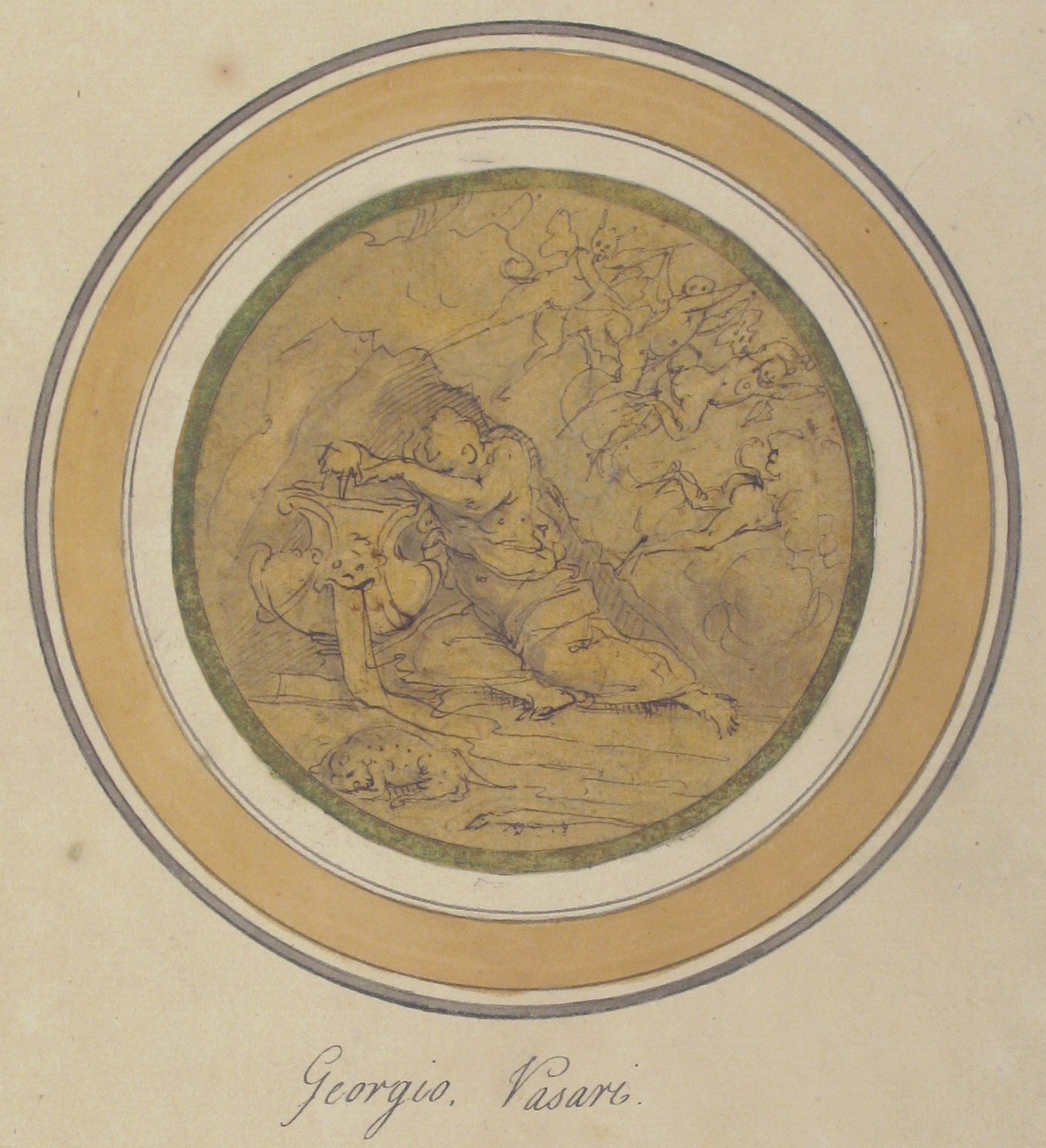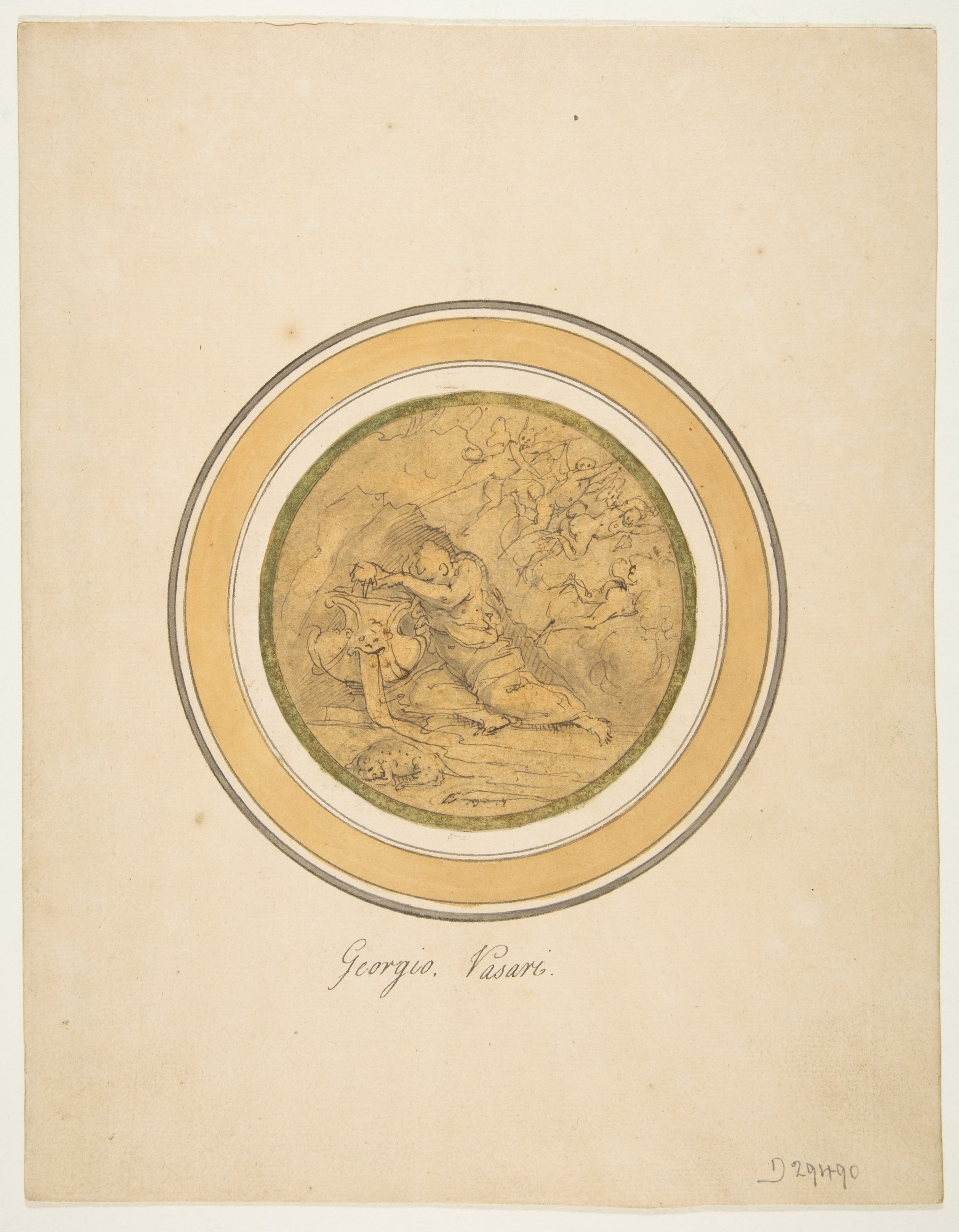Allegory of Forgetfulness
Giorgio Vasari Italian
Not on view
The two rapid sketches with the Allegory of Forgetfulness (acc. no. 67.95.3) and the Allegory of Sleep (acc. no. 67.95.4) were executed in pen and brown ink by the Renaissance artist and historian Giorgio Vasari in a quick and spontaneous manner to record his ideas for a ceiling or wall decoration. In 1981 Julian Kliemann pointed out that Vasari’s allegorical drawings in the Metropolitan Museum of Art correspond with two sections of a ceiling decoration of a bedroom (possibly for Francesco I de' Medici) planned by Vincenzo Borghini in a text datable ca. 1569-70. The Allegory of Forgetfulness is represented as a river god resting on an urn from which flow the dark waters of Lethe. The sleeping leopard and lizard in the foreground play emblematic roles, while "certi spiritelli come diavolini," representing cares, fly away at upper right. The Allegory of Sleep (acc. no. 67.95.4) differs in a number of ways from Vincenzo Borghini's description for the bedroom project. The essential elements of Borghini's scheme are nonetheless present: Sleep is attended by a young woman, and butterfly-winged putti holding mirrors appear above.
Due to rights restrictions, this image cannot be enlarged, viewed at full screen, or downloaded.
This artwork is meant to be viewed from right to left. Scroll left to view more.







